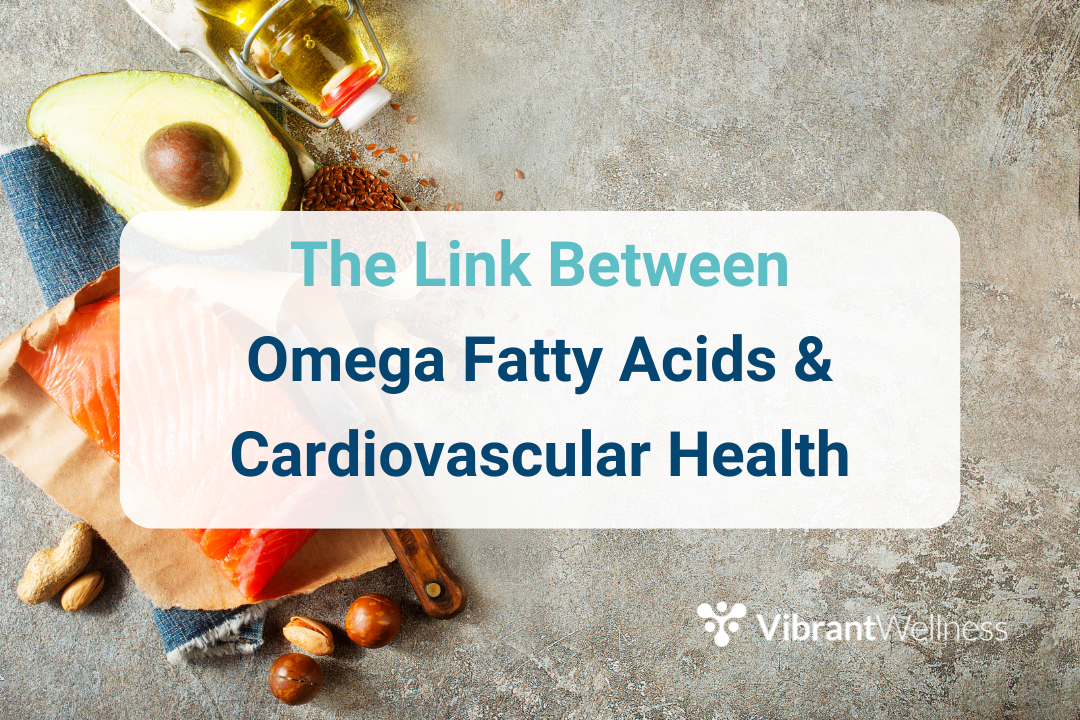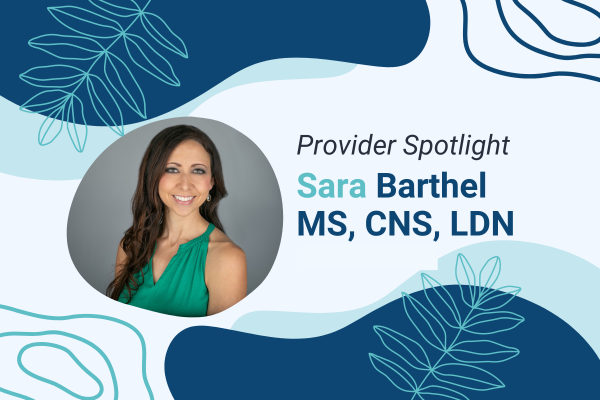How to Develop a Mycobiome Health Food Plan
Are your patients struggling with chronic, vague symptoms?
Mold exposure and mycotoxin toxicity, a common household threat, may be to blame.
According to the World Health Organization and Food and Agricultural Organization, 25% of the world’s agricultural products are contaminated with mycotoxins.1
Mold exposure and mold toxicity can cause various issues, from fatigue, headaches, and cognitive dysfunction to more severe respiratory and immune system problems.
Help your patients detox and reduce their fungal burden with advanced mycobiome testing and this customizable Mycobiome Health Food Plan designed to address health issues related to mold exposure and toxicity.
Measuring Mycobiome Health with Advanced Diagnostics
Before beginning the Mycobiome Health Food Plan, consider testing your patients with functional mycobiome testing to gain the most comprehensive view of gut health.
Testing allows you to customize the nutrition plan to each patient’s specific needs, increasing the chance of efficacy and positive outcomes.
Accurately measure your patients' mycobiome health with the following advanced functional lab tests:
- Mycotoxins Panel
- Fungal Antibodies Panel
- Gut Zoomer
- Organic Acids Test
Read more about mycobiome health testing in the table below:
Foods to Incorporate to Improve Mycobiome Health

Reduce fungal burden and promote detoxification by incorporating anti-fungal, detoxifying, and polyphenol-rich foods low in mold and mycotoxins.
Anti-fungal Foods
Eating anti-fungal foods can reduce the mold/mycotoxin load in the body. When infected with mold, it is necessary to flush out the current mold build-up within the body while also taking steps to limit and prevent future mold exposure.
Antifungal foods include:
- Garlic
- Leeks
- Onion
- Scallions
- Beans
- Coconut (milk, meat, butter)
- Coconut oil (caprylic acid)
- Basil
- Cinnamon
- Clove
- Common Thyme
- Cumin
- Oregano
- Sage
- Rosemary
- Thyme
Polyphenol Foods

Foods rich in polyphenols can help to protect against mold/mycotoxin damage. Polyphenols are naturally occurring compounds commonly found in plants that are high in antioxidants and protect the body’s tissues from oxidative damage and inflammation. Polyphenols can help mitigate the damage done by mold exposure and toxicity.
Polyphenol foods include:
- Broccoli
- Green beans
- Kale
- Onion
- Sprouts (all)
- Apple
- Apricot
- Blackberries
- Blueberries
- Cranberries
- Pomegranate seeds
- Strawberries
- Soybeans
- Pistachios
- Cinnamon
- Turmeric
- Green tea
Detoxifying Foods

Detoxifying Foods help increase phase two of detoxification in the body, known as conjugation. Conjugation involves adding molecules to the fat-soluble mycotoxins to create water-soluble compounds which can be excreted from the body.
Detoxifying foods will support the body’s natural detox systems, the liver and kidneys, and remove harmful mycotoxins, allowing patients to heal.
Detoxifying foods include:
- Artichokes
- Asparagus
- Beets
- Broccoli
- Brussels Sprouts
- Bok choy
- Cabbage
- Cauliflower
- Ginger
- Greens (Arugula/roquette, beet, chard, etc.)
- Leeks
- Onion
- Radishes
- Sprouts (all)
- Lemon
- Lime
- Cilantro
- Parsley
- Psyllium
- Broth (organic): Bone, meat, vegetable
- Vegetable juice (raw, cold-pressed, green)
Binder Foods

Binder foods help to remove mycotoxins by attaching to bile and stool, preventing the reabsorption of toxins in the bile life cycle. Without binders, mycotoxins can get reabsorbed by the body because they are attached to the bile when the body attempts to excrete them.
Because bile gets recycled in the body, there is a chance of reabsorption of these toxins; binders help prevent this and promote the excretion of mycotoxins.
Binder foods include:
- Kale
- Okra
- Chia seeds
- Flax seeds
- Aloe vera
- Chlorella
Eliminate High-Mycotoxin, High-Carbohydrate, and Fermented Foods
Foods high in mold or mycotoxins should be eliminated from the diet to reduce exposure levels and remove the source of the problem. These foods can increase the fungal burden on the body and prevent healing.Foods high in mold and mycotoxins include:
- Corn
- Mushrooms
- Peanuts
- Cashews
- Dairy products
- Grains
- Dried fruit
- Coffee
- Tea
- Yeast
Avoid High Carb Foods

Foods high in carbohydrates, such as high-glycemic fruits, high-glycemic starchy vegetables, grains, and concentrated sugars, should be eliminated to treat mold and mycotoxins.
These foods are detrimental for patients exposed to mold because increasing the carbohydrate load provides mold spores with a fuel source.
Mold can utilize sugar and starch as sustenance, so patients should remove these foods from their diet to aid in eradicating mold from the body. Some examples of high-carbohydrate foods include mango, potatoes, and white rice.
Avoid Alcohol

Alcohol should be eliminated from the diet to remove mold from the body because alcohol is made using fungi in the fermentation process.
Any foods or beverages made this way are more prone to containing unwanted fungi, which can increase the fungal burden on the body.
Some examples of food and drinks containing alcohol are kombucha, wine, and vanilla extract.
Avoid High Glycemic Index Foods

Yeast-containing and fermented foods should be avoided because yeast is a fungus and will increase the fungal burden on the body. Fermented foods are made using fungi and thus should be eliminated.
Some examples of yeast-containing foods and fermented foods include yogurt, cider, and leavened baked goods.
Additional Guidelines for Mycobiome Health

To further support your patients, recommend these additional guidelines for mycobiome health.
Choose Organic and Non-GMO Foods
Minimize exposure to environmental pesticides, herbicides, and fungicides.
Organically grown, non-GMO foods also promote mycobiome health as they contain fewer synthetic chemicals such as pesticides, herbicides, and fungicides. These chemicals can increase inflammation in the body, deterring healing.
Emphasize Diverse, Colorful Foods
Colorful foods increase antioxidants, phytonutrient compounds, and diversity in the diet.
Eating an organic, non-GMO diet rich in antioxidants, phytonutrient compounds, and a variety of healthful foods can help support immunity, detoxification, and mycobiome health.
Try Nutrient Optimizing Cooking Methods
Increase nutrients in food by focusing on preparatory & cooking methods such as:- Sprouting grains, nuts, and seeds: Sprouting grains, nuts, and seeds helps make their nutrients easier to absorb.
- Steaming, braising, baking & roasting (avoid high heat), and pressure cooking (particularly for legumes): Steaming or braising vegetables rather than frying them or cooking with high heat is another way to maintain their health benefits. Pressure cooking legumes help break down their anti-nutrients which can interfere with nutrient absorption when eaten raw or cooked without pressure.
- Choosing fresh or frozen foods: Fresh and frozen fruits and vegetables maintain their optimal nutritional value and health benefits.
How Food Sensitivities Can Affect Mycobiome Health
To further protect your patients from mold exposure and toxicity, consider how food sensitivities may affect mycobiome health. Food sensitivities can trigger a generalized immune reaction and increase inflammation throughout the body, making healing from mycobiome toxicity more difficult.
Identifying your patients' food sensitivities is vital to avoiding triggering food and optimizing immune system functioning.
Consider the following tests to assess food sensitivities:
- Wheat Zoomer
- Corn Zoomer
- Grain Zoomer
- Soy Zoomer
- Egg Zoomer
- Dairy Zoomer
- Lectins Zoomer
- Seafood Zoomer
- Mammalian Milk Zoomer
- Peanut Zoomer
- Nut Zoomer
- IgA + IgG Food Sensitivities
- IgG4 + C3D Food Reactions
- IgE Allergies
Read more about food sensitivity testing options in the table below:

Combining anti-fungal nutrition strategies with lifestyle changes and advanced functional testing can help your patients protect and improve their mycobiome health and discover the root of their symptoms—enabling vibrant health and longevity.
Download the printable Mycobiome Health Food Plan to give your patients a valuable resource for promoting mycobiome health.
References:
1https://www.ncbi.nlm.nih.gov/pmc/articles/PMC6354945/
 By
By




